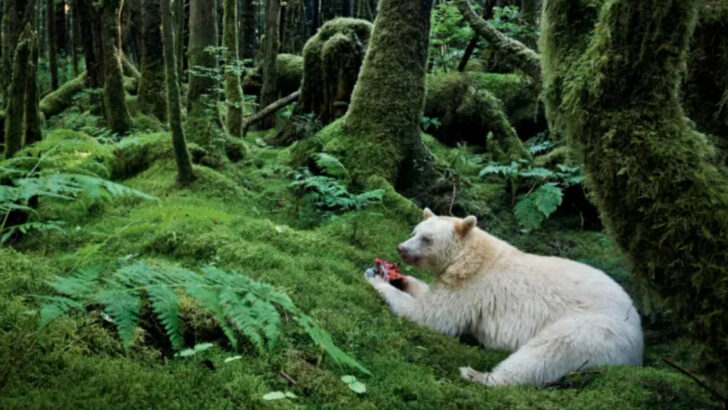Hidden deep within North America’s lush and mysterious rainforests lives the world’s rarest bear—an elusive creature that few have ever laid eyes on. With its striking features and almost mythical presence, this bear has become a symbol of nature’s untamed beauty and mystery.
This bear doesn’t just stand out for its rarity; it thrives in one of the most challenging environments on Earth. From its unique adaptations to its role in the ecosystem, there’s much more to discover about this captivating animal than meets the eye.
In this post, we’re unraveling 15 incredible facts about this enigmatic bear, shedding light on its fascinating characteristics, habitat, and why it’s so incredibly rare. Prepare to be amazed by the secrets of the rainforest’s most elusive resident!
Spirit Bear: A Rare Treasure
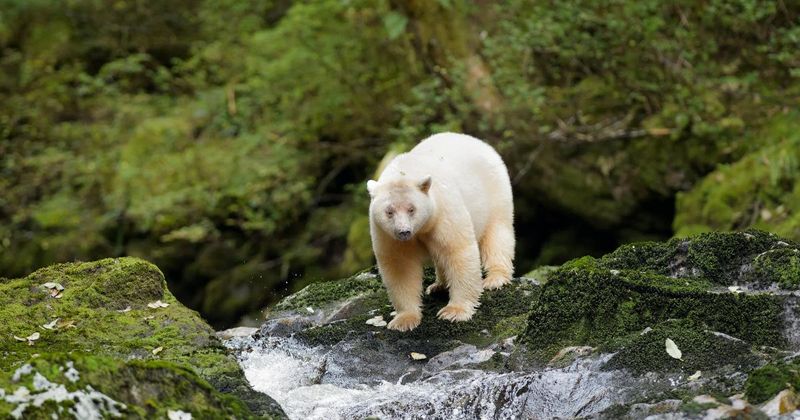
The Spirit Bear, or Kermode Bear, is a rare subspecies of the American black bear, known for its striking white fur. These bears are not albino; their unique coloring is due to a recessive gene that only a small percentage of the population carries.
This genetic marvel makes the Spirit Bear a true natural treasure, embodying the mysteries of the rainforest. With only about 400 individuals estimated to exist, they are a symbol of rarity and beauty.
Their elusive nature and ghostly appearance blend seamlessly with the misty forest, making them a delightful sight if you are fortunate enough to spot one.
Home in the Great Bear Rainforest

The Great Bear Rainforest is a sprawling, verdant paradise, stretching along the central and northern coast of British Columbia. This unique ecosystem is home to the Spirit Bear, providing a lush habitat filled with salmon-rich streams and towering trees.
Covering 6.4 million hectares, it’s one of the largest temperate rainforests in the world, offering an abundant sanctuary for these rare creatures.
The rainforest’s diverse flora and fauna coexist in a delicate balance, creating a vibrant tapestry teeming with life and growth.
Genetic Marvel of the Kermode Bear
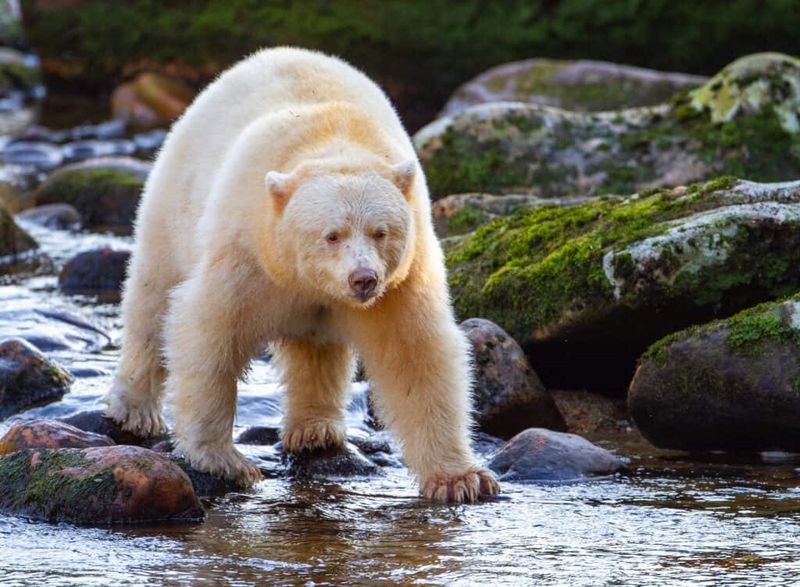
The genetic uniqueness of the Kermode Bear is one of its most fascinating attributes. Unlike albinos, these bears have pigmented skin and eyes, with only their fur being white.
This rare genetic trait results from a single nucleotide polymorphism, making it a fascinating study for geneticists. The presence of this recessive gene in the bear population is a testament to the intricate tapestry of nature’s genetic lottery.
Observing such wonders reminds us of the complexity and beauty inherent in life’s diversity.
The Role of Salmon in Their Diet
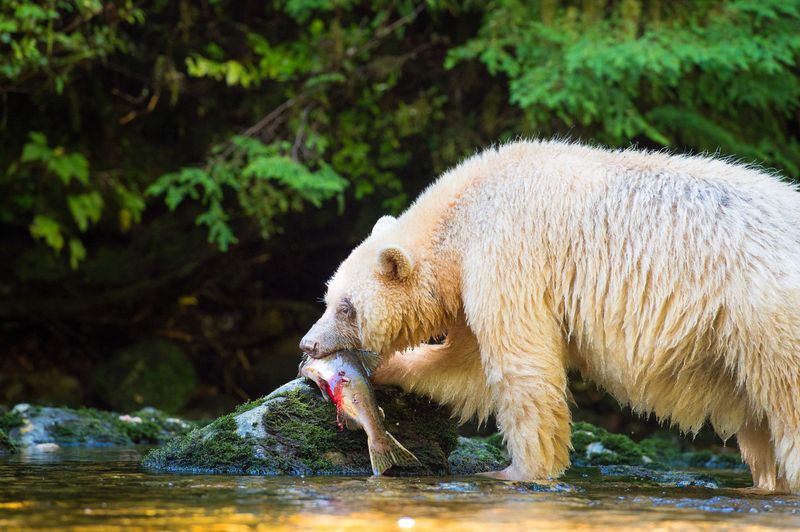
Salmon plays a crucial role in the diet of the Spirit Bear, providing them with essential nutrients and energy. These bears are adept fishers, displaying remarkable patience and skill as they catch salmon from the rushing streams of their rainforest home.
The annual salmon runs are a vital event for the bears, sustaining them through the leaner months. This interaction highlights the interconnectedness of the ecosystem, where the survival of one species supports many others in a delicate cycle of life.
Cultural Significance to Indigenous Peoples
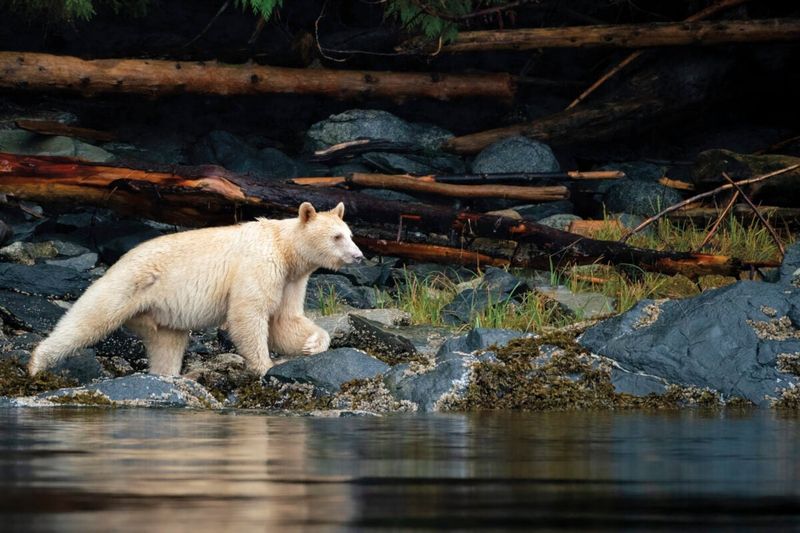
The Spirit Bear holds profound cultural significance for the Indigenous peoples of the region. Known as Moksgm’ol to the Tsimshian people, it is revered as a sacred being and a symbol of peace and harmony.
Stories and legends passed down through generations celebrate the bear’s spiritual connection to the land and its inhabitants. These narratives enrich the cultural heritage of the Indigenous communities, highlighting the deep respect and reverence they hold for the natural world.
Conservation Efforts in the Rainforest
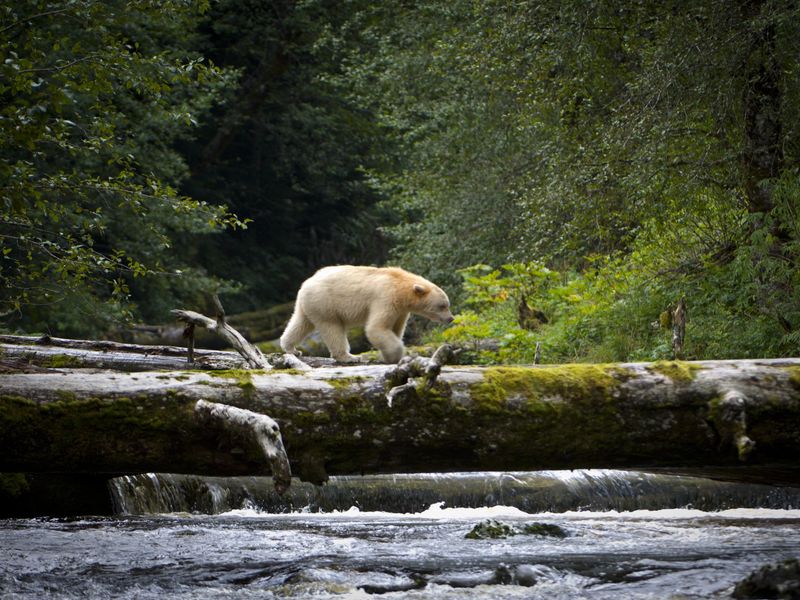
Conservation is critical to ensuring the survival of the Spirit Bear and its habitat. Various organizations and Indigenous groups work tirelessly to protect the Great Bear Rainforest from logging and industrial threats, safeguarding this unique ecosystem.
Their efforts focus on promoting sustainable practices and raising awareness about the importance of preserving this natural wonder. Through collaboration and dedication, these initiatives aim to secure a future where the Spirit Bear and its home can thrive undisturbed.
The Unique Fur of the Spirit Bear
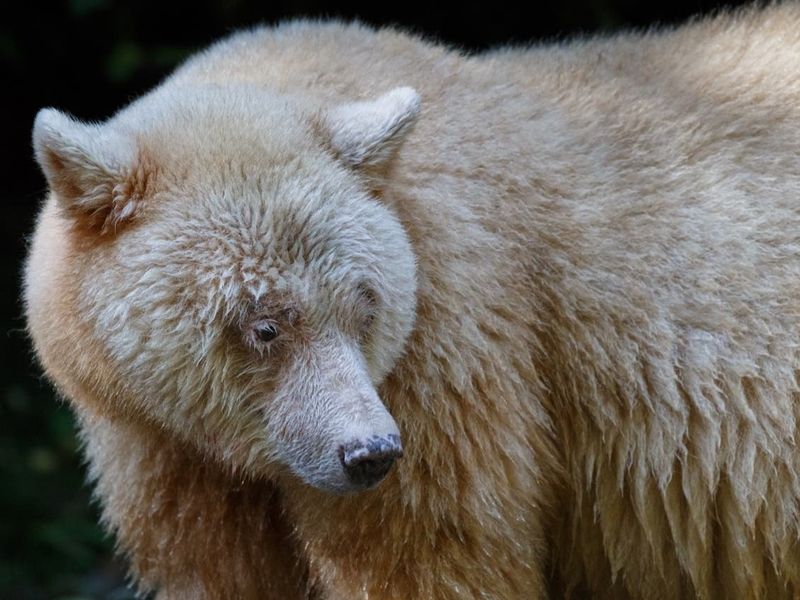
The Spirit Bear’s fur is one of its most defining features, setting it apart from its black bear relatives. Its creamy white coat is a result of a rare genetic variation, making these bears a unique spectacle in their verdant habitat.
This distinctive fur offers them a surprising advantage during salmon fishing, as the white color blends with the daylight reflecting off the water, allowing them to approach prey more stealthily.
The fur’s beauty and evolutionary purpose underscore the wonder of adaptation in nature.
Mysteries of Their Behavior
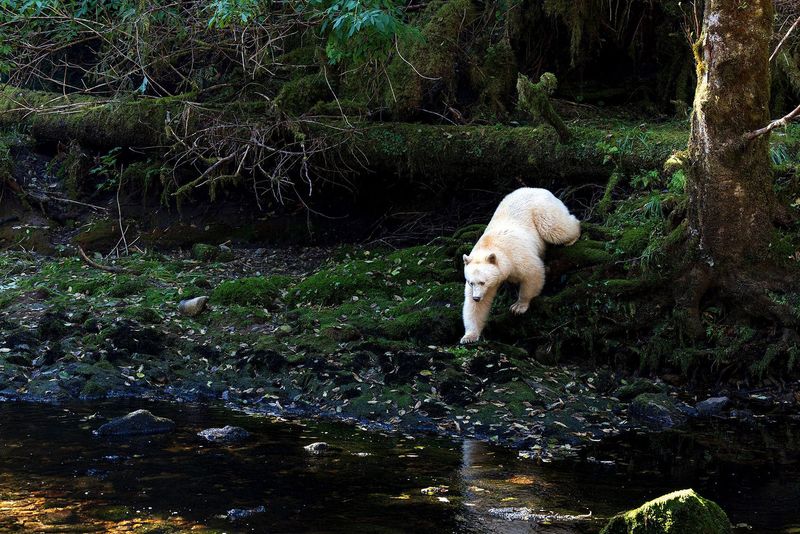
Spirit Bears are known for their curious and solitary nature, often seen roaming the rainforest alone. Their behavior is a subject of fascination, as they exhibit intelligence and adaptability in their actions.
These bears are not territorially aggressive, preferring to avoid confrontations and live in harmony with their environment. Observing them reveals insights into the quiet resilience and resourcefulness that characterize these elusive creatures.
A Symbol of Environmental Conservation
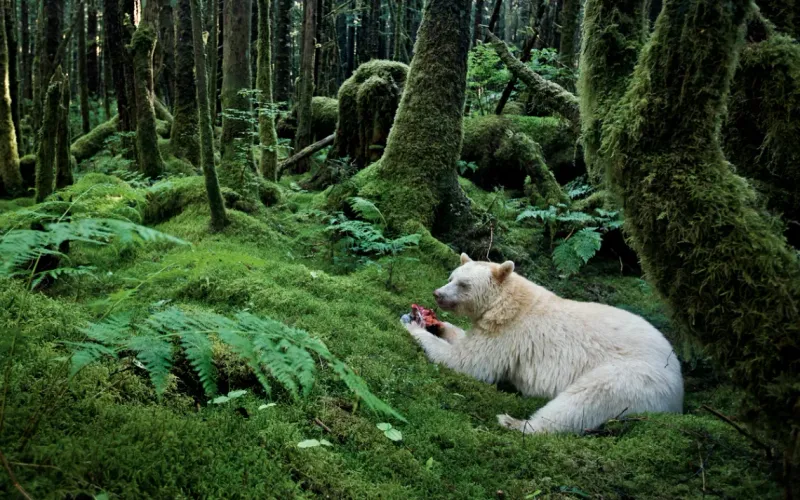
The Spirit Bear serves as a powerful symbol for environmental conservation efforts. Its existence in the Great Bear Rainforest is a testament to the importance of preserving natural habitats and biodiversity.
As the face of various conservation campaigns, the Spirit Bear inspires action and awareness, urging people to protect these irreplaceable ecosystems.
Through its silent presence, it calls for a harmonious relationship between humanity and nature, embodying the essence of conservation.
Challenges of Habitat Loss
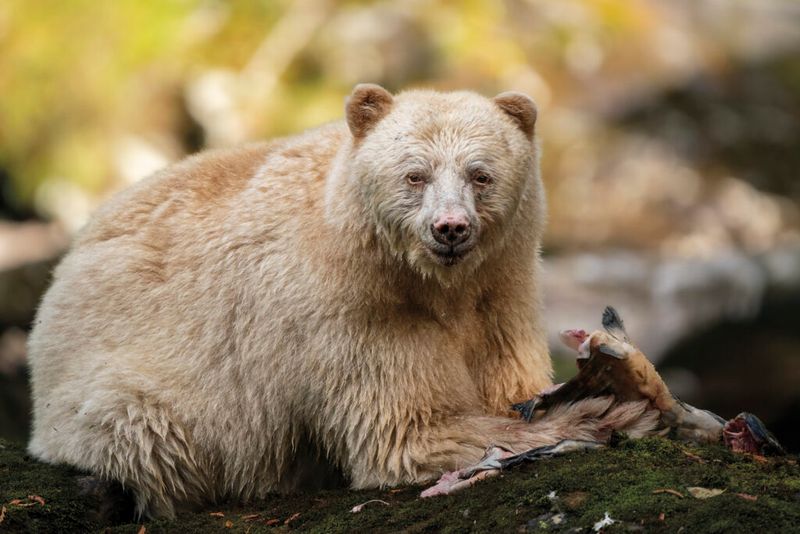
Habitat loss poses a significant threat to the Spirit Bear and its rainforest home. Logging and industrial activities encroach upon this pristine environment, disrupting the delicate balance of life.
Efforts to combat habitat loss focus on implementing sustainable logging practices and protecting large swaths of forest from development.
These initiatives strive to maintain the ecological integrity of the rainforest, ensuring that the Spirit Bear and its co-inhabitants can continue to thrive.
The Elusive Nature of Sightings
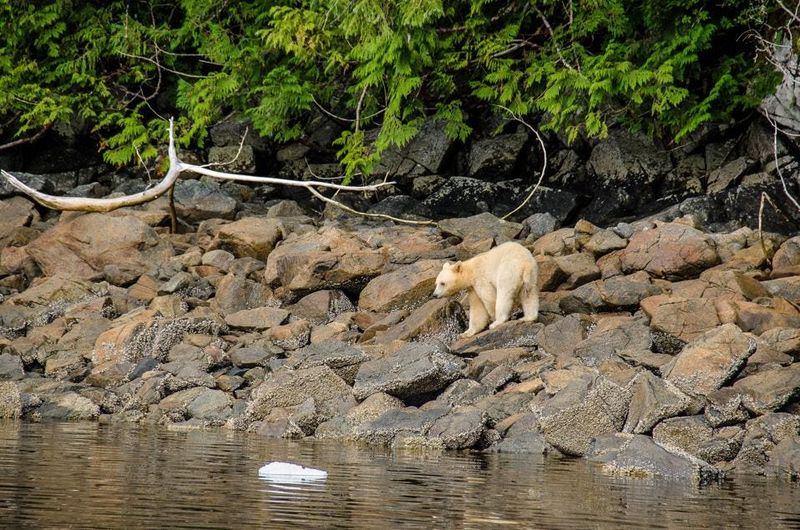
Spotting a Spirit Bear in the wild is a rare and awe-inspiring experience. Their elusive nature and the dense rainforest make sightings uncommon and highly valued.
Visitors who are fortunate enough to encounter these bears often describe it as a magical moment, where the enigmatic creature appears like a spirit among the trees.
This rarity adds to the bear’s mystique, making each sighting a cherished memory for those who witness it.
Adaptations to Rainforest Life
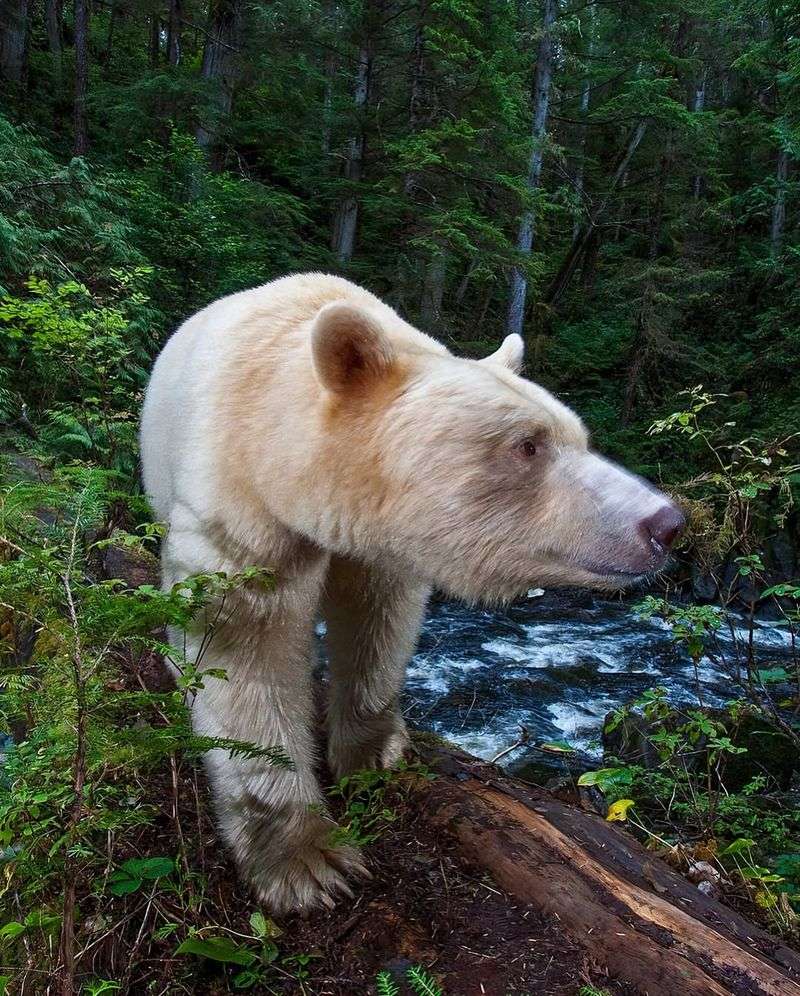
Spirit Bears have developed remarkable adaptations to thrive in the rainforest. Their thick fur keeps them warm and dry in the damp climate, while their sharp claws help them climb trees and catch fish.
These adaptations enable them to navigate their complex habitat with ease, showcasing nature’s ingenuity in equipping species for survival.
Observing their behavior offers a glimpse into the delicate dance of evolution, where every feature has a purpose and place in the ecosystem.
Spirit Bear’s Contribution to Biodiversity
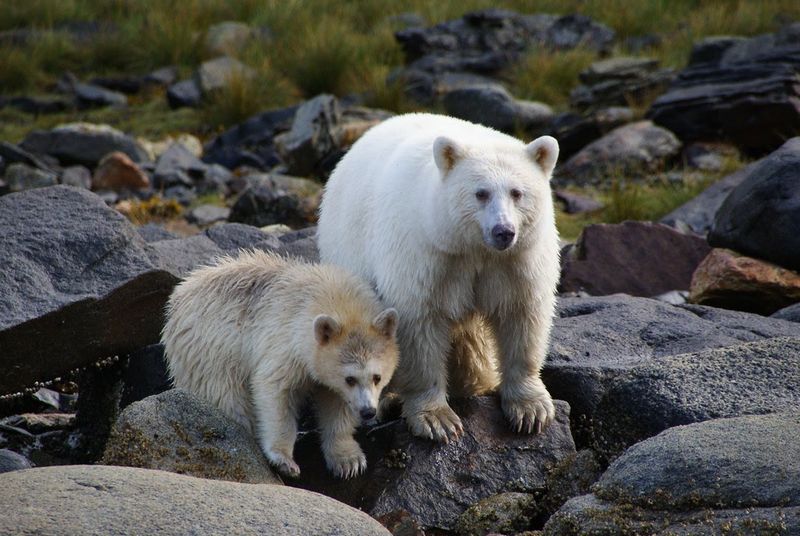
The Spirit Bear plays a crucial role in maintaining the biodiversity of its rainforest habitat. By hunting salmon, they help regulate the fish population and contribute to the nutrient cycle within the ecosystem.
Their presence also indicates a healthy, thriving environment, as these bears require a rich and balanced habitat to survive.
The Spirit Bear’s contribution to the rainforest’s biodiversity underscores the interconnectedness of all life forms, emphasizing the need to preserve and protect these natural wonders.
Tales and Legends of the Spirit Bear
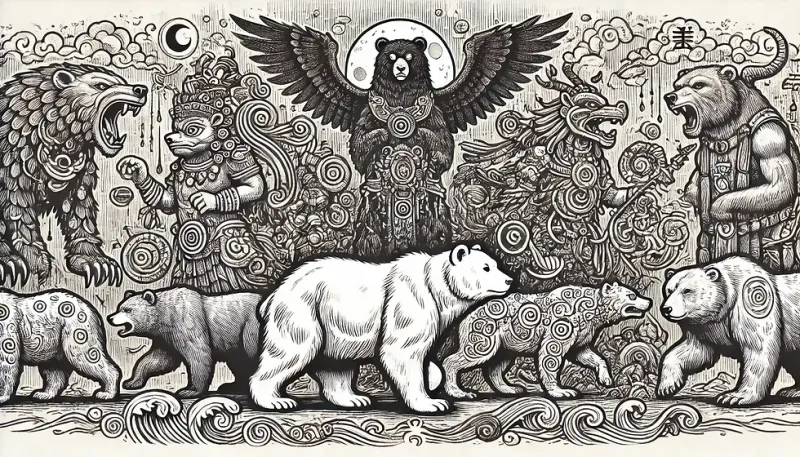
Stories and legends about the Spirit Bear abound among Indigenous communities, enriching the cultural tapestry of the region. Tales often depict the bear as a mythical creature with powers beyond the ordinary, reflecting its revered status.
These legends serve as a bridge between the natural and spiritual worlds, offering insights into the values and beliefs of the people who share the land with these rare creatures.
Through storytelling, the Spirit Bear continues to inspire awe and respect, preserving its legacy in the hearts and minds of those who revere it.
The Future of the Spirit Bear
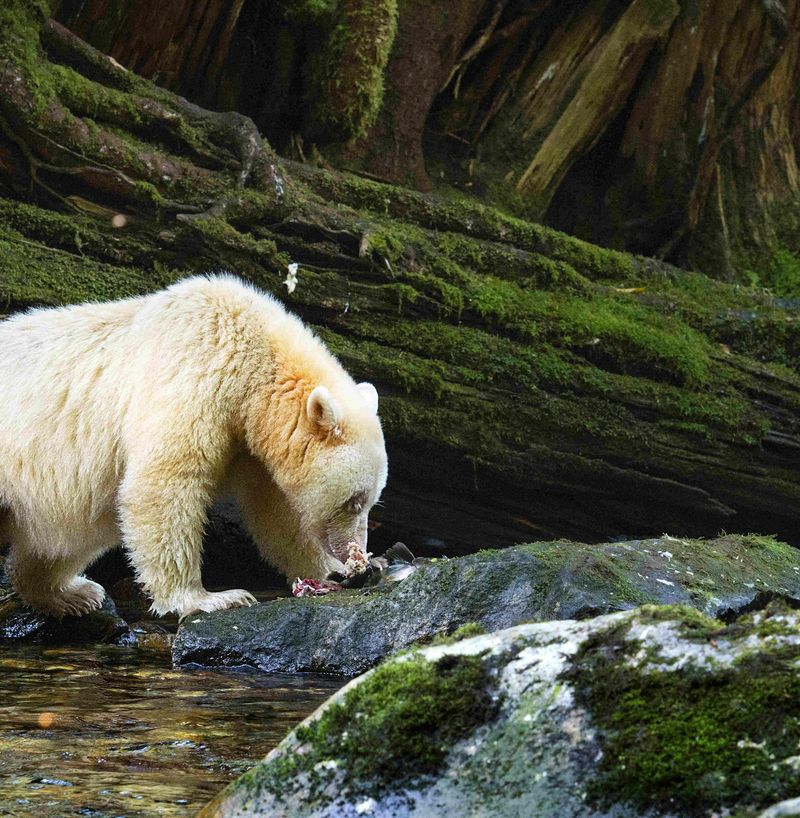
The future of the Spirit Bear hinges on continued conservation efforts and respect for its habitat. Ensuring the survival of this rare species requires a collective commitment to protecting the rainforest and fostering awareness.
With ongoing support from conservation groups and Indigenous communities, there is hope for a future where the Spirit Bear continues to roam its pristine home.
This vision of continuity and harmony inspires action, reminding us that the preservation of natural wonders is a shared responsibility.

